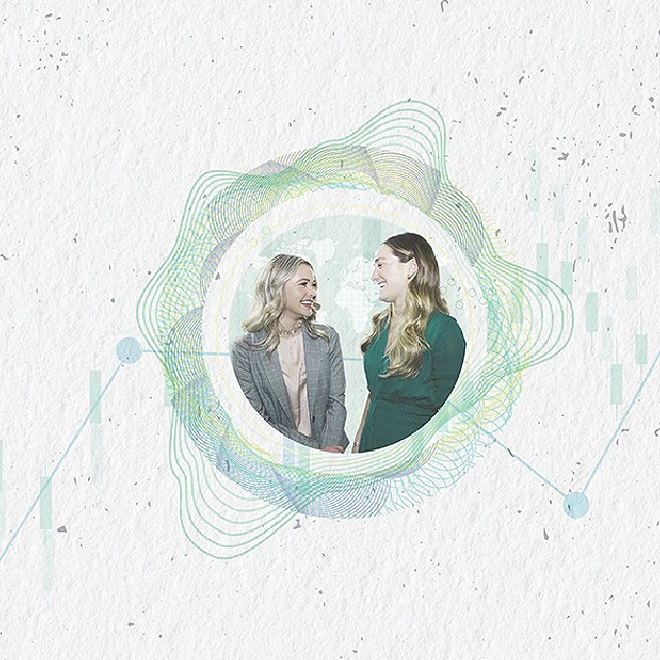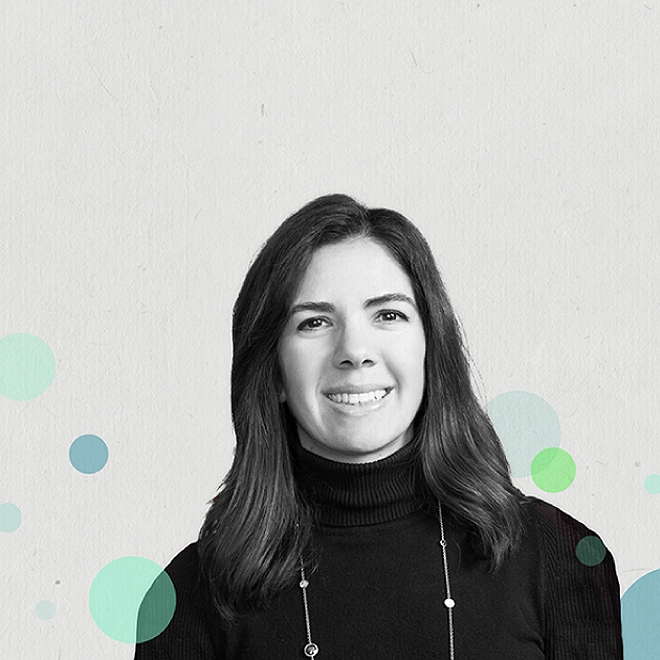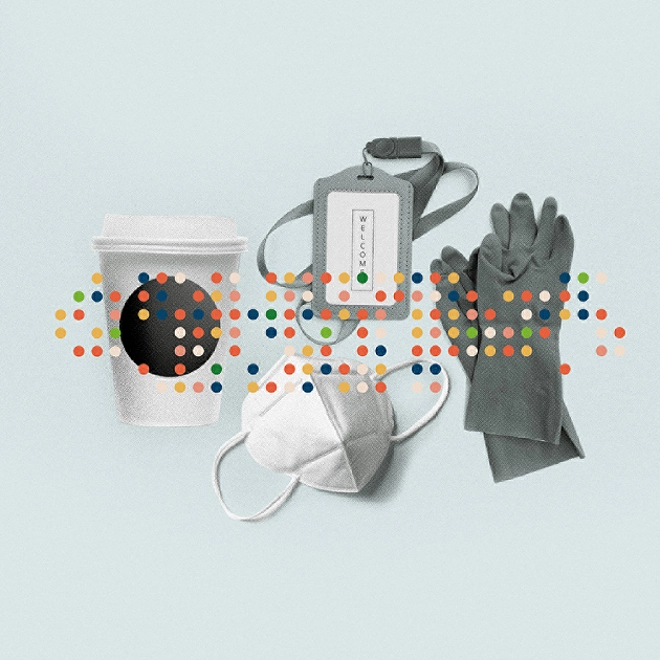A rising tide lifts all boats
Creating a better work environment for all by embracing neurodiversity
Organizations that make an extra effort to recruit, retain, and nurture neurodivergent workers can gain a competitive edge from increased diversity in skills, ways of thinking, and approaches to problem-solving.
The perfect storm: Pressure to diversify the workforce, need for innovation, and limited labor
Today, organizations are under pressure to integrate a diverse workforce, encourage out-of-the-box thinking to gain a competitive edge, and deal with a worker’s market.1 Hiring neurodivergent workers could be an integral part of the solution to these circumstances. These professionals could not only help employers turn the tide on the current labor shortage but also bring into their organizations different and valuable ways of thinking and problem-solving that could lead to innovative solutions and give companies a competitive advantage.
Despite most companies’ increasing focus on diversity, equity, and inclusion (DE&I) in the workforce, the neurodivergent group is often overlooked in the diversity conversation, and consequently, hiring efforts. As a result, these individuals often experience higher rates of unemployment and underemployment compared to the general population.2 In the United States, it is estimated that 85% of people on the autism spectrum are unemployed, compared to 4.2% of the overall population.3
In this article, drawing from insights derived from interviews, case studies, and market observations, we explore the value of embracing and incorporating neurodivergent workers, and provide a framework for thinking through hiring, screening, and retention strategies.4 Throughout, potential changes are suggested relating to recruiting strategies, leadership styles, and cultural considerations that might not only help accommodate neurodivergent workers, but also could ultimately better support other diverse colleagues and neurotypical counterparts as well. These suggested strategies can help organizations not only capture the full potential of neurodivergent professionals but also better leverage the value of the overall workforce and create a better workplace for all.
Broadening the lens on DE&I
Diversity, equity, and inclusion (DE&I) is not just about people of color, race, gender, age, ethnicity, sexual orientation, and physical disability. It includes neurodiversity, which encompasses a wide range of mental orientations, including but not limited to autism, dyslexia, attention deficit hyperactivity disorder (ADHD), dysgraphia, dyspraxia, Tourette syndrome, and Down syndrome. However, even within a particular form of neurodiversity, such as autism, there is no single type; people exhibit characteristics across a spectrum.
However, like religious or philosophical differences, neurodiversity is often invisible, making its identification or diagnosis harder. A lack of awareness about this kind of diversity could result in colleagues, managers, or other professional collaborators not understanding the unique requirements of this population of workers.
While estimates vary for different neurodiversity types, age groups, regions, and geographies, roughly 10%–20% of the global population is considered neurodivergent.5 Many business leaders have openly discussed being neurodivergent, but there’s room for more effort in this area. John Chambers, Cisco’s former CEO, says, “25% of CEOs are dyslexic, but many don’t want to talk about it.”6 If leaders self-identify as neurodivergent, the rest of the workforce would feel comfortable to come forward too.
Why hire neurodivergent workers?
“Neurodiversity may be every bit as crucial for the human race as biodiversity is for life in general. Who can say what form of wiring will be best at any given moment?”— Harvey Blume, The Atlantic, 1998
One big benefit of an inclusive work culture is that it fosters diversity of thought, different approaches to work, innovation, and creativity. Research suggests that teams with neurodivergent professionals in some roles can be 30% more productive than those without them. Inclusion and integration of neurodivergent professionals can also boost team morale.7
Each neurodivergent person is unique, and it wouldn't be accurate to generalize their cognitive process. One neurodivergent leader we interviewed said, “When people are discussing something, I can almost see it in my head; I reorganize it and then explain it in simple terms.”8For some neurodivergent individuals, the process may be more abstract (vs. linear); for others, it may be a matter of reordering and changing the sequence, e.g., putting step 4 before step 2.
Abilities such as visual thinking, attention to detail, pattern recognition, visual memory, and creative thinking can help illuminate ideas or opportunities teams might otherwise have missed.9 As one of the neurodivergent leaders we interviewed said, “We need to move away from discussing and dealing with this topic as diversity and more about strengths and unique capabilities.”10

Ensuring the success of the neurodivergent workers
In an effort to create a more diverse workplace, organizations may need to challenge their traditional workplace processes in several ways. The tactics presented below can help in creating a more diverse workplace overall, and if tailored correctly, can better serve to integrate and leverage the full potential of neurodivergent professionals (see figure 1).

Revisit the hiring process
In recent years, organizations have been consciously hiring from different sources to acquire different skill sets and capabilities. For example, an individual we interviewed shared how his team is consciously hiring from design schools for consulting roles to encourage diversity of thought and unconventional approaches. Below are some key considerations.
Cast a wider net
It is often the case that organizations continue to recruit directly from a set of colleges and universities that have few or no neurodivergent candidates. It is generally only when they cannot find matching talent directly that they partner with employment support agencies to source neurodivergent talent. One way for organizations to increase their pool of potential neurodivergent candidates is by altering their campus hiring efforts to incorporate schools that cater to neurodivergent individuals or have programs specifically for neurodivergent individuals. Fortunately, there are already many such schools, and the recruiting trend is on the upswing.12
Evaluate screening criteria and processes
As the hiring process is the first interface of potential employees with the employer, it is important to minimize both recruiter and algorithmic bias. AI hiring systems coded using mostly neurotypical candidates’ data could be biased against applicants with autism due to atypical facial or speech expressions; this could result in a higher probability of neurodivergent individuals being eliminated if the algorithm is given disproportionate weightage in the hiring process.13 Thus, to avoid this potential algorithmic bias, it is important for human recruiters to validate the results of one-way AI video interviews. Likewise, recruiters may have unconscious biases; so, it is important to sensitize recruiters and hiring managers to different personality types and alert them against drawing conclusions based on deviations from what may be an expected response related to eye contact, handshake, gestures, etc.
Some companies use talent matching software in their screening process to better understand applicants’ unique abilities. This approach can help appraise hard-to-assess competencies such as risk-taking, perseverance, and emotional intelligence, along with traditional traits, such as logical reasoning and quantitative and verbal abilities. Though not without the potential for bias, it can also help the employer potentially find a better match for open roles than is possible through the traditional CV screening process and also speed up the screening of applications. For any AI tool, organizations, in consultation with their legal counsel, should consider whether and how to assess if the tool could have a disparate impact against any particular group of applicants.
Reinvent the interview
The interview process may also require tweaking. Consider moving from the abstract to specifics, and do not assume that everyone will connect the dots the same way. As one of the specialists we spoke with suggested, “During interviews, do not ask questions such as, ‘How many tennis balls fit into a swimming pool.’”14 Instead, focus on the skills needed on the job to keep the conversation closer to reality.
Some organizations have already tweaked their interview processes to better support neurodivergent applicants. Instead of packing back-to-back interviews into one day, they schedule them across several days to reduce stress on the applicants. Applicants are also allowed to use their own laptops for tests instead of a whiteboard or a company-provided device, so that they feel more comfortable.
Rather than figuring out how to rework the interview on their own, some organizations let candidates have a say on how they would like to interact with the employer, thereby “co-creating” this “first date.” Organizations could also suggest or consider trial work periods, provide opportunities to applicants to demonstrate skills, and arrange collaborative interviews (allowing the candidates to meet more employees in addition to the interviewers), as alternatives to the traditional face-to-face interview.
Expand the roles available
As with all diverse candidates, it is important to steer clear of stereotypes about neurodivergent individuals. A leader from an employment support organization for neurodivergent individuals noted that it is critical to “not categorize people into certain skillsets based on the diagnosis … When we started to talk to post-secondary institutions about who was self-identifying themselves (as neurodivergent) to their accessibility offices, there were more people self-identifying themselves from arts, then there were from STEM, contrary to popular opinion.”15
Freddie Mac, a US-based mortgage-finance company, hires people on the autism spectrum for various roles.16 Initially, they offered internships for securities analysis roles and gradually started offering positions across various departments such as enterprise risk management, information technology management, and loan processing. What started as a 16-week internship program for individuals on the autism spectrum is now a full-time employment model for individuals with autism as well as those with ADD, ADHD, and dyslexia.

Create a conducive work environment
Getting the screening and interview process right is necessary but not sufficient. Organizations should also create a culture and workplace where both neurodivergent and neurotypical individuals can thrive. Below are some key considerations.
Respect individual differences
Different professionals (whether neurodivergent or neurotypical) may have different working styles: some may need clear, multistep instructions once; some may need regular reiterations; others may be comfortable with broad asks and can break them into multistep activities themselves. Managers should find out how each professional works best, how they best understand assignments, and adapt their style accordingly.
While it may seem obvious, minor tweaks to communications, such as being more specific or including action (verbs) can go a long way. One parent of an ADHD individual explained, “If I say to my daughter, go clean your room, that means absolutely nothing to her. If I say, go upstairs, bring all your dirty clothes down, pick up everything that’s on the floor, dust the dresser, she’ll understand it.”17 Similarly, a professor to neurodivergent students explained the need to add verbs to the syllabus, such as “read chapter 1” and “solve questions 1 through 8.”18
Additionally, communicating in the virtual or hybrid environments could be a challenge to some. Individuals consume and process information differently, so miscommunication is always a risk. Following up on calls or virtual chats with an email that reinforces the message and sending notes or a transcript or recording of the call could help mitigate this risk.
Provide a mentor
“One of my teachers allowed me to be explorative and creative. I was very much into music, arts, and building the New York City skyline with construction paper. She allowed me to explore what naturally came to me and that made me feel empowered.”— Professional with dyslexia 19
Mentors provide much-needed support to allworkers’ careers,20 but they are perhaps even more important for the development of the neurodivergent workforce. Organizations that provide mentors to professionals with a disability reported a 16% increase in profitability, 18% in productivity, and 12% in customer loyalty.21
Career advice is not the only support a mentor can offer. A mentor can be an advocate for the professional, playing an active role in creating opportunities and, over time, could empower the individual to build relationships and create other professional allies across the organization.
In addition to mentors, work buddies and trusted peers who make the effort to understand the individual and provide long-term commitment can help neurodivergent professionals feel more empowered. Often, a work buddy or peer emerges organically when one joins the firm; this relationship is often fostered through affinity groups such as college alumni. However, organizations that accelerate their hiring from nontraditional colleges should be aware that students from these colleges may not have an established alumni network within the organization, unlike traditional colleges and universities. The organization may need to consciously create an ecosystem of allies to help bridge this gap.
Create a culture that offers and encourages both flexibility and inflexibility
As is the case for many workers, flexibility can be especially important for neurodivergent individuals. A flexible work schedule can allow people to take time off for therapy appointments and self-care. Organizations can foster a culture of flexibility by making it part of their policy, rather than placing the responsibility on individual workers. A work-from-home arrangement may be a viable approach for those who might perform better out of a home office, especially for those who are hesitant to travel or work in a social office setting.22 As companies transition into hybrid work models post COVID-19, they should consider what kind of hybrid approach might meet the unique preferences of their neurodivergent professionals.
However, while flexible schedules may be desirable for some neurodivergent individuals, for others, a routine is what makes them thrive. One of our interviewees shared the feedback provided by a neurodivergent worker working for a government agency, regarding how this individual enjoyed the predictability and specificity of the job. She knew what she had to do and when she had to do it, and that made her feel comfortable.
Team-building activities can enable workers to interact in more informal ways, but leaders need to be careful not to let these activities define “firm culture.” Some workers may prefer not to participate in social events for a variety of reasons such as social anxiety, introversion, or their need for a routine. One professional we spoke to shared feedback from a neurodivergent worker who explained, “What I need to do to put in that eight-hour day is I need to go home, I need to have my routine, I need to have my time, so I’m best at what I do.”23 A buddy or mentor can help coworkers understand these preferences. A leader at an employment support organization for neurodivergent individuals we interviewed said, “A buddy can step in and clarify that an individual who logs off every day at 5 PM is as much a team player as someone who is staying back late and joining team dinners.”24
Understanding this need can be beneficial for broadening acceptance for both neurodivergent and neurotypical workers who may prefer not to socialize with colleagues outside of work hours. Managers should also continue to think creatively about how to embed team-building activities into core work, and foster a culture not only of acceptance, but of belonging (see the sidebar, “Creating a sense of belonging”).
Creating a sense of belonging
Exclusion is not an option, but mere tolerance and acceptance of individual differences is not enough either. The problem with tolerance and acceptance is that people determine if they can tolerate or accept others, which means that they drive which rules and norms others need to follow to be accepted.25 Further, these approaches still put the “difference” before the “individual.” It is important to create a sense of belonging to ensure neurodivergent (and neurotypical) professionals thrive in their roles.
Organizations can foster this feeling of belonging broadly in three ways27:
- Comfort: Neurodivergent professionals have the freedom to bring their authentic self to work and are treated fairly.
- Connection: Professionals identify themselves with a defined team (e.g., function, department, geography, etc.) and have a sense of community with their peers.
- Contribution: Professionals are valued for their individual contributions, and they feel aligned with the organization’s purpose, mission, and values.

Provide tailored career journeys for all
As we have already seen in our Future of Work research, offering curated, personalized work experiences not only enables workers to better contribute and develop in the workplace, but it can help the organization grow as well.28 This approach is especially relevant to the neurodivergent workforce. Some important considerations for making this happen include the following:
Frame organizational policies to support neurodiversity
Many organizations may not have specific organizational policies to support neurodivergent professionals, as they do for other minority groups (gender, race, ethnicity, etc.). Clear organizational policies can ensure that everyone understands them in the same way. It is also important to codify and specify unspoken rules that some neurodivergent workers might otherwise miss.And these policies can be helpful if intervention is required for discriminatory behavior. Organizations are better prepared for legal considerations and a clear process for intervention can be established as part of the organization policies. Further, given that neurodiversity is often invisible (see sidebar, “Broadening the lens on diversity”), organizations may want to put privacy policies in place to protect information about neurodivergent workers’ diagnoses, and/or craft individualized approaches based on individual worker's preferences.
When formulating policies for neurodiversity, organizations could consider targets for hiring neurodivergent talent, developed in consultation with legal counsel, in addition to common diversity headcount targets. It is also important to take these efforts beyond discrete projects to multiyear commitments with metrics for goals and progress. And when designing any program, it is important to involve neurodivergent team members in the process and ensure that inputs from potential recipients of the program are incorporated.
Do not predefine what success/growth should look like
Growth and career path mean different things to different people. While some may aspire to ascend to higher levels (e.g., some of the directors we interviewed), for others, success might mean being in a role they like; not everyone wants to become a leader in a traditional hierarchy. Some may prefer to work in teams, others may prefer to work alone. Thus, to ensure success in a role, it is important for organizations to deliberate on tailored career paths that recognize the goals, capabilities, and strengths of the individual—whether neurodivergent or neurotypical.
Offer new roles in the capacity of mentor/coach
As neurodivergent professionals become experienced in their roles, they could evolve as mentors or coaches and pay it forward to other neurodivergent professionals in the organization. Eventually, this pool could become a strong network where professionals not only feel like they belong but are able to leverage each other’s experiences for individual/organizational good.

Parting thoughts
As organizations are increasingly challenged to rethink many of their workforce strategies and long-standing recipes for success, embracing and unleashing the potential of the neurodivergent workforce opens up opportunities. Many US companies are now more open to hiring neurodivergent workers and are willing to make the adjustments required. Given the benefits these professionals bring in relation to innovation and productivity, organizations that do not move in this direction risk losing out to other organizations that provide professionals a safe and progressive work environment.
What organizations do to provide an inclusive environment for their neurodivergent workforce can have spillover effects on the entire workforce. What leaders and managers learn from finding solutions for the unique needs of neurodivergent professionals can be applied to the entire workforce. Common considerations for neurodivergent professionals may alter traditional HR practices but can inevitably make the workplace a better, safer, and more inclusive place for everyone.
Human Capital
Deloitte’s Human Capital services leverage research, analytics, and industry insights to help design and execute critical programs from business-driven HR to innovative talent, leadership and change programs.



